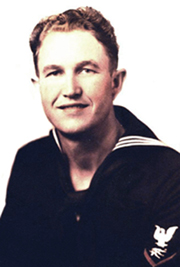Ray Reaves, a charter member of the Johnson City Rescue Squad, is proud of his approximately seven-year affiliation with the decisive organization.
“Our unit was about the first one established in these parts,” said Ray. “The squad was organized sometime in the mid-1940s with 15 to 20 of us. We wore distinctive looking white coveralls. The people whose names I remember were George Livingston, Bill Prevette, Elihu Widener and S.S. Jones, our unit head.”

Mr. Reaves went on to say that the squad met every two weeks upstairs at the Main Street fire station. This facility offered adequate room for them because they had very little equipment then. Ray continued: “Meetings usually consisted of a guest doctor who instructed us how to assist with various types of emergencies. Surprisingly, we had no prior formal training before joining the squad.”
Primary services included dragging area lakes for drowning victims, responding to automobile wrecks and setting up oxygen tents in people’s homes. They were also required to respond to plane crashes, but Ray could not recall any such disasters. “We were a volunteer organization,” said Reaves, “even furnishing our own vehicles and gasoline. All of us had regular jobs. I worked for Mullins Hardware on Market Street near the Southern Train Depot at the time.”
Squad members’ work bosses had to agree to let them respond to emergencies with short notice. Also, their respective employers paid them while on serving with the Squad during normal work hours. That commitment took some very understanding business owners.
Ray went on to say: “When we got the call to go to an emergency, we went directly to the crisis location. We kept a list of each others’ phone numbers handy and would call whoever was available. We were often shorthanded. We averaged about two calls a week, although I can recall times when we were needed twice in one day.”
Ray noted the difficulty of dragging a lake: “The squad had three boats for use. One boat pulled as many as three lines at a time. Each line had a board at the end of it about 18 inches long containing ten hooks that were each 3-4 inches long. Each hook was attached to a small chain, giving it some leave way. On occasion, we were called into Virginia and North Carolina, especially around the French Broad River. We seemed to be about the only ones around who could perform this kind of work. Sometimes we hooked something only to find out it was a limb, log or stump.
“Sometimes, we had to break a hook to free the line. Hooking debris was a recurring aggravation for us. Sometimes we started dragging early in the morning and continued until late that night. The use of lights allowed us to work through the night. I recall one occasion when a man abandoned his car along an area lake and vanished. We dragged for about 40 days before learning that he had been spotted in Florida. Over time, nearby cities formed a rescue squad. Greeneville, Kingsport and Elizabethton soon had one. We began pooling our resources and assisting each other in a cooperative effort.”
Eventually, the members became more specialized and the work more complicated and regulated. The Johnson City squad eventually acquired a paid manager and a new office. Ray concluded with these words:
“I feel really good about my service with the Rescue Squad. It always gave me a good feeling to be able to assist people with emergencies. Even dragging operations usually brought closure to a tragic event.”

Comments are closed.